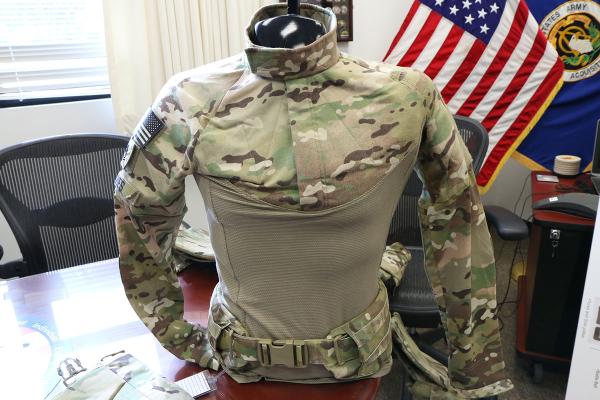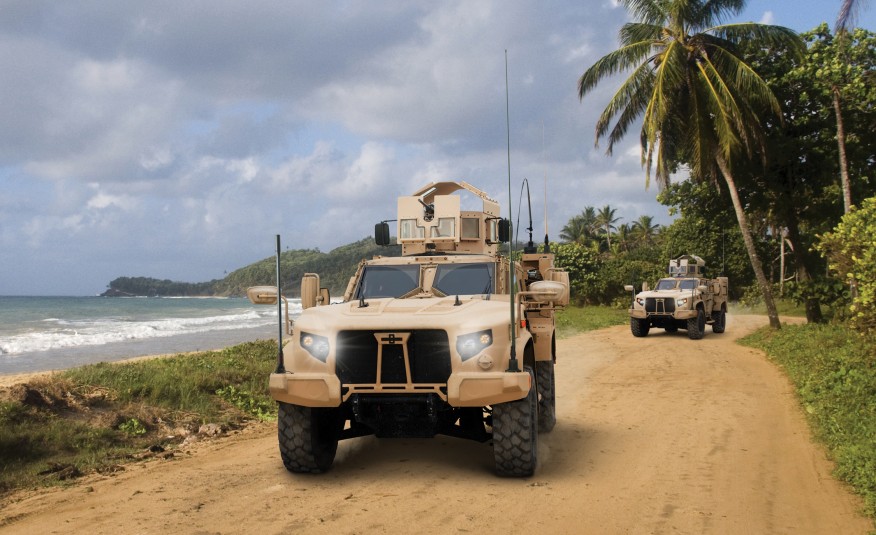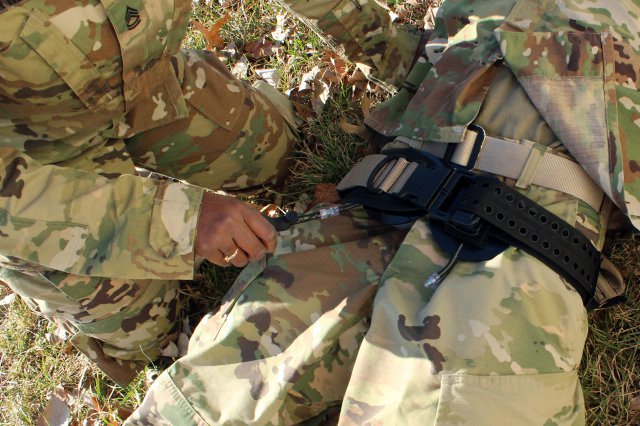The top 10 US Army modernization efforts of 2016
Posted on
Supporting the fight around the globe means providing Soldiers with the most advanced technology available.
The right technology can ensure overmatch against future adversaries in an increasingly complex and dangerous world, where the threat is often “elusive and ambiguous,” according to Army Vice Chief of Staff Gen. Daniel B. Allyn, speaking at an industry event in Michigan, Oct. 27.
The Army must ride the wave of technology or risk being left behind, cautioned Lt. Gen. Michael E. Williamson, the principal military deputy to the assistant secretary of the Army for Acquisition, Logistics and Technology.
Consumer electronics are advancing at an incredibly rapid pace, with the average time to obsolescence of some devices as short as 24 months, he noted at a “Network Readiness in a Complex World” panel in July, he said.
Fortunately for Soldiers and the American people, Army researchers and scientists and industry partners made great strides in modernization in 2016. The following is a sampling of 10 of their top advancements and milestones.
30MM CANNON FOR STRYKER
The first prototype Stryker infantry carrier vehicle, outfitted with a 30-millimeter cannon, was delivered to the Army Oct. 27.
The upgraded Stryker vehicle will be known as the Dragoon, the name of the 2nd Cavalry Regiment. The prototype features a new fully-integrated commander’s station, upgraded drivetrain componentry and hull modifications, according to a press release from Program Executive Office-Ground Combat Systems.
According to Allyn, Army leaders in Europe identified a capability gap following the 2015 Russian invasion of Ukraine. “The Russians, it turns out, had upgraded and fielded significant capabilities while we were engaged in Iraq and Afghanistan,” he explained.
Army leaders recognized that existing Stryker weaponry placed U.S. forces at unacceptable risk, he said. An urgent operational needs statement submitted in March 2015 resulted in a directed Stryker lethality requirement, one that included an accelerated acquisition effort to integrate the 30-millimeter cannon on the vehicles.
Fielding to the 2nd Cavalry Regiment in Europe will begin in May 2018, which represents “a near-record time from concept to delivery,” Allyn said.
LIGHTWEIGHT BALLISTIC SHIRT

When Army engineer Robert DiLalla set out to develop a new design for Soldier protection, he knew he had to break the mold. The result of his revolutionary approach, which focuses on the Soldier as an athlete, is the game-changing, ballistic combat shirt, a new lightweight body armor system.
“We set out with this science and technology effort to meet the needs of high-performance athletes, which is what Soldiers are,” said Dilalla, the team leader of the Infantry Combat Equipment Team at the Natick Soldier Research, Development and Engineering Center.
The invention is a departure from the “interceptor” body armor system, which was an advancement when it was developed for the Marine Corps in the late 1990s. Over the years, however, the armor system increased in complexity and bulk. As additional components were added, it became difficult for Soldiers to put it on. In contrast, the ballistic combat shirt is easy to don.
“So now instead of having to attach all of these components, you can throw it on like a goalie shirt in hockey,” DiLalla said. ” It’s form-fitting so the Soldiers like it. Instead of one panel, the deltoid section is three panels. It’s contoured so it … has an improved range of motion.”
The shirt weighs 35 percent less than the current interceptor body armor system components it replaces and is less bulky. The invention has been a hit with users.
“The Soldiers have spoken loud and clear with more than 90 percent user acceptance in multiple user evaluations,” said DiLalla. “Typically, as we assess new body armor components, we’d consider 60 percent a successful number.”
DOUBLING HOWITZER RANGE

Picatinny Arsenal engineers have been working to create a longer, newly modified M777A2 howitzer that has the potential to double the system’s current artillery range.
The modification, called the extended range cannon artillery, or ERCA, adds six feet to the cannon but less than 1,000 pounds to the overall system. A mobility demonstration is the first step to determine if the howitzer can be modified for extended range, or if a new system is required. Mobility testing will be conducted at Aberdeen Proving Ground, Maryland, in the near future.
“Right now [the M777] can shoot about 30 kilometers, but once all of the upgrades are complete, it will be able to shoot about 70 kilometers,” said David Bound, M777ER Lead, Artillery Concepts and Design Branch, which is part of the Armament Research, Development and Engineering Center, or ARDEC.
“It will be able to reach out and hit targets well in excess before the targets can reach them,” Bound said. “It will also give a lot of operational overmatch so the warfighter won’t have to worry about coming into a situation where they are under fire before they can return fire.”
NEW HAND GRENADE

Engineers at Picatinny Arsenal are working on the first new lethal hand grenade in more than 40 years. The multi-purpose hand grenade design will provide both fragmentation and blast overpressure more effectively and safely than its legacy counterparts.
Once fielded, Soldiers will be able to select and use a hand grenade with different effects simply by flipping a switch, said Jessica Perciballi, ARDEC project officer for Enhanced Tactical Multi-Purpose, or ET-MP, Army, Grenades & Demolitions Division.
The new grenades are also designed for ambidextrous use, meaning that they can be thrown with either hand. Current grenades require a different arming procedure for left-handed users.
“With these upgrades in the ET-MP, not only is the fuze timing completely electronic, but the detonation train is also out-of-line,” said Matthew Hall, Grenades Tech Base Development Lead. “Detonation time can now be narrowed down into milliseconds and, until armed, the hand grenade will not be able to detonate.”
Hall said the current plan for ET-MP is to transition the new grenades to Project Manager Close Combat Systems in fiscal year 2020.
JLTV DEBUT

The first seven joint light tactical vehicles were turned over to the Army and Marine Corps in late September by Oshkosh Defense for testing at different sites around the force.
The JLTV is a tactical wheeled vehicle with a chassis that offers protection from underbelly blasts and an “intelligent” suspension system that can be raised and lowered for off-road conditions. It also touts greater fuel efficiency than current tactical vehicles.
A total of about 100 of the JLTV production vehicles will be provided to the Army and Marine Corps for testing over the next year, at a rate of about 10 per month, officials said. The vehicles will undergo maneuverability and automotive testing at Yuma Proving Ground, Arizona, and other sites around the country.
“It’s on schedule,” said Scott Davis, program executive officer for combat support and combat service support, about the JLTV program. “It’s doing everything we ever expected it to. It’s just incredible.”
ENTANGLED PHOTONS

At the Army Research Laboratory, scientists are looking at new ways to exploit the most fundamental or “quantum” component of light — the photon — to enhance communications, sensing and cryptography, and anything else they can think of.
“We don’t really know what all the applications are. But our mandate, in part, is to find those applications,” said Michael Brodsky, a physical scientist at the Army Research Laboratory.
In October, Brodsky was setting up a new lab at the ARL, located about 12 miles north of the Pentagon in Adelphi, Maryland. He has boxes there that generate entangled photons — the smallest measure of light.
A single photon, on its own, can be captured in a memory unit — or “quantum storage” — and subsequently measured. But when two entangled photons are captured and measured in the same way, Brodsky said, they yield the same measurements every time.
Those same two entangled protons could be split up, on different sides of the lab, on different sides of a research campus, or on different sides of the country, and still, because they are entangled, behave in the same way and yield the same measurements.
The results of those measurements are unpredictable and can be converted to a string of zeros and ones, Brodsky said, but “you get identical strings of zeros and ones at two remote locations. Which, for instance, could be used as a key for secure communications.”
Using entangled photons for secure networking is just one of challenges that ARL is working on now. They are researching other ways to use entangled photons, such as enhancing sensors and quantum computing.
NEW ARMORED VEHICLE

The first armored multipurpose vehicle, or AMPV, was handed over to the Army Dec. 15 to begin a 52-month engineering and manufacturing development phase.
At least 29 of the vehicles will be manufactured for this phase of the procurement process, officials said. The AMPV is meant to replace the armored brigade combat team’s M113 family of vehicles and addresses the M113’s shortcomings in survivability and force protection, as well as size, weight, power and cooling.
The AMPV has a brand new hull but maintains some of the Bradley legacy design, allowing for some compatibility efficiencies, according to Maj. Gen. David G. Bassett, program executive officer for Ground Combat Systems. In fact, about 60 to 70 percent of the parts are common with existing ground combat vehicles, Bassett said during a press conference in October.
The AMPV also has space inside to allow for the addition of new systems in the future, and it comes with an improved power train. The hull is stronger from a force protection perspective, too, he said.
If the low-rate production option for the AMPV is approved, procurement officials said several hundred of the vehicles will be manufactured for testing over the next four years.
HYDROGEN-POWERED VEHICLE

The Army Tank Automotive Research, Development and Engineering Center and General Motors unveiled an energy-efficient tactical vehicle that could one day save lives on the battlefield.
The ZH2 hydrogen-fuel-cell electric vehicle prototype was rolled out Oct. 3, during the Association of the United States Army Annual Meeting and Symposium. The ZH2 operates on hydrogen fuel instead of traditional diesel, which means it uses much less fuel than traditional tactical vehicles.
At idle, it is “extremely efficient,” according to Kevin Centeck, team leader for Non-Primary Power Systems, Ground Vehicle Power and Mobility Directorate, TARDEC.
The vehicle also has an extremely low acoustic signature, meaning it’s very quiet. “It’s silent mobility, silent watch,” Centeck said. “You don’t give away your position by turning on the engine.”
The ZH2 also has a radically reduced thermal signature because its engine doesn’t operate as hot as a diesel engine, which means that enemy thermal sensors will be less likely to pick up the heat signature, allowing for improved stealth.
NEW TOURNIQUET

One of the latest advances in treating hemorrhaging on the battlefield is the “junctional tourniquet,” according to Lt. Gen. Nadja Y. West, surgeon general of the Army and commander of the Army Medical Command.
A medic or fellow Soldier can apply a traditional tourniquet to a person’s limb, but can’t use it to stop hemorrhaging in the abdomen, chest, groin, waist, pelvis or armpit, she explained Aug. 18, at a meeting of the Defense Writer’s Group in Washington, D.C.
But a junctional tourniquet can be applied to wounds in ways not possible with conventional tourniquets.
Developed at the Army Medical Research and Materiel Command, Fort Dietrick, Maryland, the junctional tourniquet is essentially a belt with one or more inflatable air bladders that can be puffed up, somewhat like a blood-pressure cuff, to apply pressure to a wound.
The device can be deployed to stop hemorrhaging in about 60 seconds.
The junctional tourniquet is now being fielded to Soldiers in harm’s way, but it’s so new — just months since its fielding — that West hasn’t yet been briefed on how many lives it has saved, though she believes the number will be significant over time.
IMPROVED TURBINE ENGINE

The improved turbine engine program, or ITEP, will develop a completely new engine that will likely one day replace those currently in use by the AH-64 Apache and Black Hawk helicopters, according to Maj. Gen. William K. Gayler, commander, Army Aviation Center of Excellence and Fort Rucker, Alabama
Degraded lift capability is especially problematic in areas where high-altitude, high-temperature flights are required, including nearly half of Afghanistan, Gayler said at the Army Aviation Association of America-sponsored 2016 Army Aviation Mission Solution Summit in Atlanta in April.
Using the UH-60 Black Hawk helicopter as an example, Gayler explained that an average of about 78 pounds per year have been added annually. That weight includes increased protective gear, ammunition, new technologies and so on.
All of that weight affects speed, lift, range and maneuverability. Years ago, four Black Hawks could move a platoon, Gaylor pointed out. Now, it takes eight or nine and, by 2020 — assuming the linear weight increases continue at the current rate — it will take 15 to 20.
ITEP will return a lot of that lost capability, he believes. “ITEP is critical,” he said. “We must get it right to buy back maneuverability.”
Brig. Gen. Bob Marion, Program Executive Officer-Aviation, said ITEP is a big deal for the Army and could someday be resident in about 85 percent of its platforms.
It also has the potential for achieving future vertical lift, or FVL, if not by means of the actual motor, then by pieces associated with the development of the technology, he said.
But engineering and manufacturing development won’t begin until fiscal year 2024, with the first aircraft test slated for fiscal year 2026.
Contributing to this article were: C. Todd Lopez, Gary Sheftick and David Vergun of the Army News Service; Jane Benson, Natick Soldier Research, Development and Engineering Center public affairs; along with Lauren Poindexter and Eric Kowal of Picatinny Arsenal public affairs.
(Follow David Vergun on Twitter: @vergunARNEWS)
Subscribe to our newsletter
Promotions, new products and sales. Directly to your inbox.
